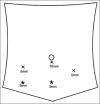Laparoscopic reconstruction of iatrogenic-induced lower ureteric strictures: Does timing of repair influence the outcome?
- PMID: 22279310
- PMCID: PMC3263212
- DOI: 10.4103/0970-1591.91433
Laparoscopic reconstruction of iatrogenic-induced lower ureteric strictures: Does timing of repair influence the outcome?
Abstract
Context: Influence of timing of repair on outcome following laparoscopic reconstruction of lower ureteric strictures
Aims: To assess the influence of timing of repair on outcome following laparoscopic reconstruction of lower ureteric strictures in our adult patient population.
Settings and design: Single surgeon operative experience in two institutes. Retrospective analysis.
Materials and methods: All patients were worked up in detail. All patients underwent cystoscopy and retrograde pyelography prior to laparoscopic approach. Patients were categorised into two groups: early repair (within seven days of inciting event) and delayed repair (after two weeks). Operative parameters and postoperative events were recorded. Postprocedure all patients were evaluated three monthly. Follow-up imaging was ordered at six months postoperatively. Improvement in renal function, resolution of hydronephrosis and unhindered drainage of contrast through the reconstructed unit on follow-up imaging was interpreted as a satisfactory outcome.
Statistical analysis used: Mean, standard deviation, equal variance t test, Mann Whitney Z test, Aspin-Welch unequal variance t test.
Results: Thirty-six patients (37 units, 36 unilateral and 1 simultaneous bilateral) underwent laparoscopic ureteral reconstruction of lower ureteric stricture following iatrogenic injury - 21 early repair (Group I) and 15 delayed repair (Group II). All patients were hemodynamically stable at presentation. Early repair was more technically demanding with increased operation duration. There was no difference in blood loss, operative complications, postoperative parameters, or longterm outcome.
Conclusions: In hemodynamically stable patients, laparoscopic repair of iatrogenically induced lower ureteric strictures can be conveniently undertaken without undue delay from the inciting event. Compared to delayed repairs, the procedure is technically more demanding but morbidity incurred and outcome is at par.
Keywords: Boari flap; iatrogenic; laparoscopy; ureteric stricture; ureteroneocystostomy.
Conflict of interest statement
Figures
Similar articles
-
Laparoscopic ureteroneocystostomy for mid and lower ureteric strictures: Experience from a tertiary center.Urol Ann. 2018 Jul-Sep;10(3):243-248. doi: 10.4103/UA.UA_137_17. Urol Ann. 2018. PMID: 30089980 Free PMC article.
-
A retrospective comparison between laparoscopic and open ureteroneocystostomy for management of benign lower ureteral strictures: An experience in tertiary care centre of Eastern India.Urologia. 2023 May;90(2):308-314. doi: 10.1177/03915603221150465. Epub 2023 Jan 20. Urologia. 2023. PMID: 36660884
-
Laparoscopic appendiceal interposition pyeloplasty for long ureteric strictures in children.J Pediatr Urol. 2018 Dec;14(6):551.e1-551.e5. doi: 10.1016/j.jpurol.2018.06.017. Epub 2018 Jul 18. J Pediatr Urol. 2018. PMID: 30082131
-
Laparoscopic ureteroneocystostomy for benign lower ureteric stricture: case study and literature review.Int J Clin Pract Suppl. 2005 Apr;(147):115-7. doi: 10.1111/j.1742-1241.2004.00450.x. Int J Clin Pract Suppl. 2005. PMID: 15875646 Review.
-
Laparoscopic ureteral reimplantation: a single center experience and literature review.J Endourol. 2009 Feb;23(2):269-74. doi: 10.1089/end.2008.0266. J Endourol. 2009. PMID: 19220085 Review.
Cited by
-
[Update on ureteral reconstruction 2024].Urologie. 2024 Jan;63(1):25-33. doi: 10.1007/s00120-023-02232-z. Epub 2023 Nov 21. Urologie. 2024. PMID: 37989869 Review. German.
-
[Surgical reconstruction of the ureter].Urologe A. 2019 Jun;58(6):651-657. doi: 10.1007/s00120-019-0944-z. Urologe A. 2019. PMID: 31098652 Review. German.
-
Laparoscopic and Robotic Management of Ureteral Stricture in Adults.In Vivo. 2020 May-Jun;34(3):965-972. doi: 10.21873/invivo.11864. In Vivo. 2020. PMID: 32354881 Free PMC article. Review.
-
Laparoscopic ureteroneocystostomy for mid and lower ureteric strictures: Experience from a tertiary center.Urol Ann. 2018 Jul-Sep;10(3):243-248. doi: 10.4103/UA.UA_137_17. Urol Ann. 2018. PMID: 30089980 Free PMC article.
-
Laparoscopic ureteral reimplantation with Boari flap for the management of long- segment ureteral defect: A case series with review of the literature.Turk J Urol. 2017 Sep;43(3):313-318. doi: 10.5152/tud.2017.44520. Epub 2017 Jul 31. Turk J Urol. 2017. PMID: 28861304 Free PMC article.
References
-
- Simmons MN, Gill IS, Fergany AF, Kaouk JH, Desai MM. Technical modifications to laparoscopic Boari flap. Urology. 2007;69:175–80. - PubMed
-
- Jack McAninch, Santucci RA. Renal and ureteral trauma. In: Wein AJ, Kavoussi LR, Novick AC, Partin AW, Peters CA, editors. Campbell Walsh urology. 9th ed. philadelphia: elsiever; 2007. p. 1289.
-
- Kaouk JH, Gill IS. Laparoscopic reconstructive urology. J Urol. 2003;170:1070–8. - PubMed
-
- Siedeman CA, Huckabay C, Smith KD, Permpongkosol S, Nadjafi-Semnani M, Lee BR, et al. Laparoscopic ureteral reimplantation: Technique and outcomes. J Urol. 2009;181:1742–6. - PubMed
-
- Razdan S, Silberstein IK, Bagley DH. Ureteroscopic endoureterotomy. BJU Int. 2005;95(Suppl 2):94–101. - PubMed



